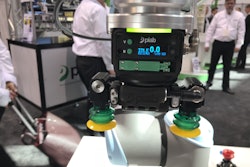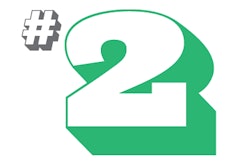
I’ve reached a major milestone within my research career: over 10,000 shopper experiences analyzed. I’ve experimented with numerous biometric devices, including eye tracking, facial expression analysis, and even the electrical activity of the brain. The ability to watch, in real time, shopper cognition, has provided countless applicable insights. But as I reflect, I return to Marshall McLuhan’s 1964 hypothesis that the medium—in this case the packaging—is just as important as the message—the product. Packaging is the primary medium for how the product is perceived in retail.
Let’s take a step back. Before Gutenberg and his printing press, we relied on oral tradition—history through the words of others. The medium was sound. Sounds are interpreted by the brain much differently than visuals. They can change us and allow us to more easily empathize with one another and the story being told.
Since Gutenberg’s 15th-century breakthrough, our (“our” including the bulk of our population nowadays with literacy rates reaching historic highs) use of visual mediums, both print and digital formats, has exploded. This is where packaging is positioned: highly visual and tactile. We experience visual messaging much differently than sound. For instance, studies have shown that we remember things we see and touch much longer than information we only hear. (Read the article, “In one ear and out the other.")
McLuhan wrote, “We shape our tools and thereafter our tools shape us.” The way we experience a product is through its medium, the packaging. Smart UPCs and QR codes are becoming the norm for retailers, letting the computers we all tote around in our pockets do the heavy lifting for their products. And with the continued integration of technology in packaging, the way we experience and extract value from products is going through a third wave—from sounds, to visuals, and now, to multiple realities.
Packaging as enhancement
In 2011, Danish toy manufacturer Lego began staging its products in three-dimensional, interactive views using AR (augmented reality). It’s better than instructions! Just aim your camera at the packaging, and Lego’s AR phone app not only shows you, in 3D, what the finished product will look like, but it also interacts with your creations once they are built. Packaging becomes a new canvas to experience the product. (Learn more on AR and Lego here.)
Packaging as art
PepsiCo’s LifeWTR has featured six themed series of exclusive artwork on their bottles. With themes like Diversity in Design, Women in Art, and Arts in Education, this is packaging that inspires and adds value in display. In a category where a premium package can make the difference between a $1 and $4 bottle of water, LifeWTR’s rethinking of packaging as art brings a differentiated value to beverages.
Packaging as information
Because QR code reading is now integrated on camera phones, they are becoming increasingly popular. Although they are still woefully underutilized in everyday packaging, QR codes open up major avenues for communicating information that might not be vital, but is definitely valuable to consumers. From videos to explain how to use a product, to customer reviews, to information about sustainability and ingredients, QR codes can embellish your products’ story far beyond the physical package.
I see the third wave being very important, with packaging as the medium that allows users a better understanding of the value of their physical goods. As the suppliers of this medium, consider embracing the idea that you are the brand’s message. And with this, educate yourself on these technologies so you’re best equipped to add them in your next packaging project.
Dr. R. Andrew Hurley is the founder of Package Insight and The Packaging School, and an Associate Professor at Clemson University.


























